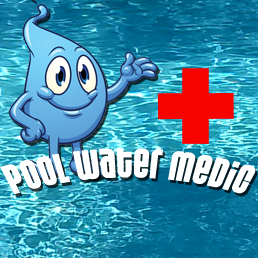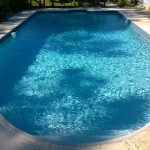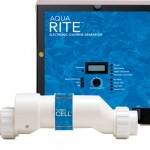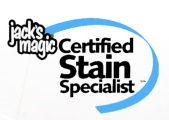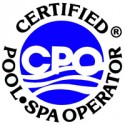The Truth About Salt
ByFor the last several years, chlorine generators have been gaining momentum in North America as primary sanitizers for all pool types. Pool builders are responding to customer buzz by packaging them into their new construction projects. Field technicians are using them to generate additional service revenue. Even the “pop-up” pool makers are actively in the salt business, selling generators for even the smallest above ground pools. Based on what we hear from customers in our stores, most customers are being told that all you have to do with “salt systems” is add salt, and the pool will take care of itself. “Set it and forget it” just like TV infomercials. But all the buzz and infomercials aside, I think its time for some straight salt talk.
How it works…the truth
This may not surprise most of you reading this, but salt generators are actually creating chlorine! Some people are still surprised by this fact when they start asking about salt systems. Water travels through a “cell” in the pool’s circulation system. The cell contains layers of metallic plates that are electrically charged by the generator’s power supply. The process of electrolysis converts the salt to a form of liquid chlorine. This creates an instant and continuous source of free chlorine in the water. As the chlorine is used up, it converts back to salt allowing it to be generated into chlorine again. Because of its continuous chlorine production, there is less need for shocking or adding chlorine manually, yet there are times when a salt water pool will require the use of another type of chlorine. See the table below for adding salt (“Salt Demand”). Most manufacturers recommend around 3200 ppm of salt in the pool water to efficiently produce chlorine in the cell. Humans can usually taste salt around 5000 ppm. So, you shouldn’t be able to taste the salt in your pool water. The Pacific Ocean, incidentally, has a salinity level of 36000 ppm, more than ten times the salinity of pool water.
Some people comment that their pool water is “softer” now with salt than it used to be on their old system. Softness has to do with calcium hardness and not salinity. So unless the homeowner filled the pool from a soft water system, this statement is usually inaccurate. However, there is less “combined” chlorine in the water with salt systems, reducing chlorine odors and eye irritation. If you have ever walked into a public pool facility, you may have noticed the smell of “chlorine.” Most people assume that this is because of extremely high chlorine levels. In fact, the smell comes from “free” chlorine getting used up. As chlorine gets used up because of high swimmer loads and bather waste, the chlorine combines into “chloramines,” which are inactive or “dead” chlorine molecules. There is still chlorine in the water, but it is “bound up” with itself, unable to sanitize, creating the typical public pool smell. So, saltwater pools, with their continuous source of free chlorine, typically don’t have a public pool smell to them.
Salt, similar to calcium and cyanuric acid, stays in the water unless the water is diluted. Backwashing, bather splashing, and evaporation all require the addition of water throughout the pool season, effectively diluting the pool water. Typically, adding just a few bags of Pool Salt a couple times during the pool season will keep the salt levels where they should be. Always have your salt level checked several times during the pool season. (See “Salt Demand” table below for top-off and start-up salt doses.)
Most generators are equipped with a sensor that tests salinity levels, but it only checks at certain time intervals. So, if you have just added salt, or are opening your pool, give the system some time (24-48 hours) to display an accurate salt level.
pH & Alkalinity
Anything that enters your pool water has a pH. Humans, animals, leaves, rain, chemicals, or whatever will affect pH in the water. So what about salt? Well, salt itself does not drastically change pH or Alkalinity. But the liquid form of chlorine generated by the salt cell will cause high pH swings (see “Disinfectant Characteristics”). The chlorine in salt pools is most similar to liquid chlorine with a similar pH. Of course nobody will tell you this when you are signing a pool construction contract or paying a pool guy to put one in, but salt systems will actually increase your pH and Alkalinity. One of the symptoms of a pool with extra high alkalinity is a clear green hue to the water. This is a common symptom especially during seasons when source water is already high in alkalinity. Since the chlorine generated in salt pools is very similar to liquid chlorine, salt pool owners have a unique challenge to constantly maintain their pH. Furthermore, since the total alkalinity acts as a buffer for pH, it is an even greater feat to keep alkalinity down. Allowing Alkalinity and pH to rise without any action will result in water that may allow staining or scaling. Since most Salt system customers have been told they don’t have to do anything but put salt in their water, we often find that a few years after installing their salt system, pool owners have to deal with scaling problems, plaster staining, or unusual water colors. Among these pools we also encounter cells that inaccurately sense the lack of salt due to scale buildup on the sensor. One of the simplest, yet mostly ignored, maintenance procedures is to acid wash the salt cell a couple times per season. Ask your pool professional to perform this or consult your pool dealer or equipment manual for help doing this on your own.
ORP controllers
Stay with me on this one. In most commercial pool systems, Oxidation Reduction Potential (ORP) controllers are used to automatically detect the oxidizing capacity present in the pool water. Oxidizers such as chlorine, bromine, and ozone accept electrons, while decreasers such as sodium bisulfate and sodium thiosulfate lose electrons. So, an increase in oxidation will result in a decrease in reduction and vice versa. The controller’s platinum probe sensors detect electron activity, and depending on the water’s ability to oxidize or reduce itself, the controller will activate feeding pumps which will dose the appropriate chemicals such as liquid chlorine and/or hydrochloric acid. These pumps may switch on many times a day to maintain pH and chlorine levels. It is common for a 40,000 gallon public pool to dose between 5 and 15 gallons of acid solution per week in order to keep up with the acid demand caused by liquid chlorine. Pool systems that already have acid pumps installed are good candidates for salt chlorinators since they already have a way to continuously dose acid.
Cyanuric acid
As is the case with Liquid Chlorine, the chlorine in salt pools is being generated continuously without any protection from the sun’s ultraviolet rays. This is what we refer to as “unstabilized chlorine.” The “stabilizer” required is called Cyanuric acid. There are also stabilized forms of chlorine such as Chlorine Tablets (Trichlor) or Granular Chlorine (Dichlor). Using these types of chlorine in your pool will offer some protection, but the cyanuric acid level should still be tested by a pool professional to ensure UV protection against the sun. Indoor pools need no stabilizer since they have no UV exposure.
90% of unstabilized chlorine is destroyed by the UV radiation from the sun within two hours. Salt cell manufacturers Pentair and GoldLine both require the presence of more than 50ppm cyanuric acid in the water to protect the Chlorine from burn out. In fact, in a recent phone call to Pentair regarding an issue with a salt cell at a jobsite, the Manufacturer told us they would not warrant the service until we could show that the Cyanuric acid level was above 90ppm in the pool water.




